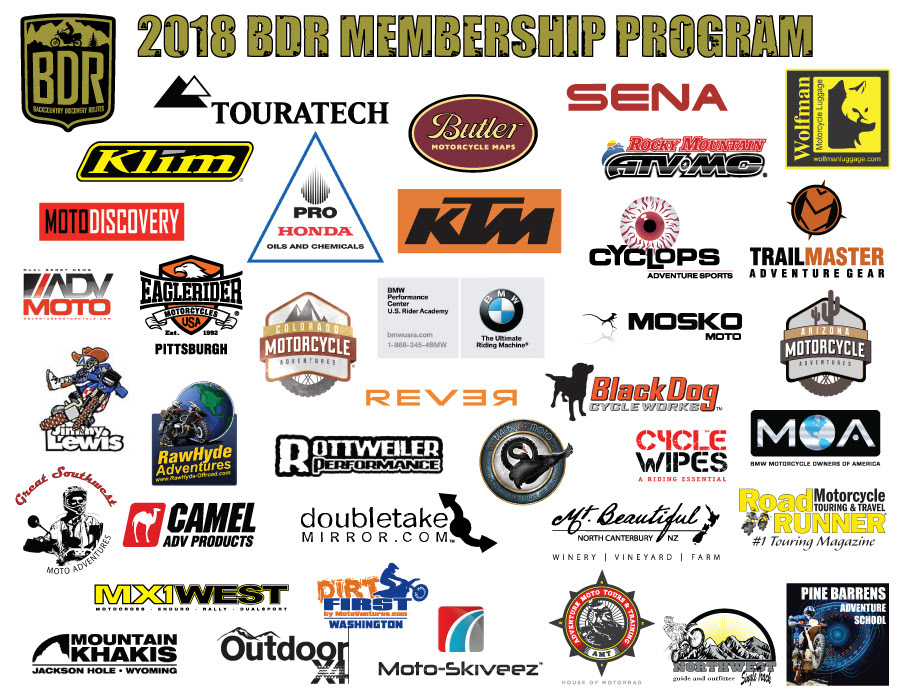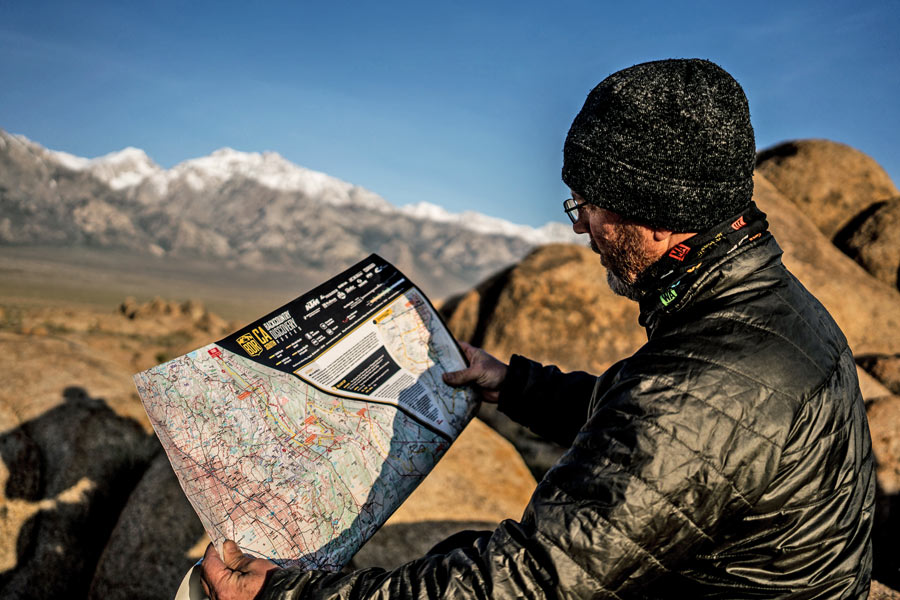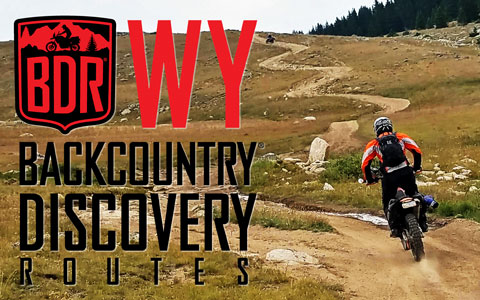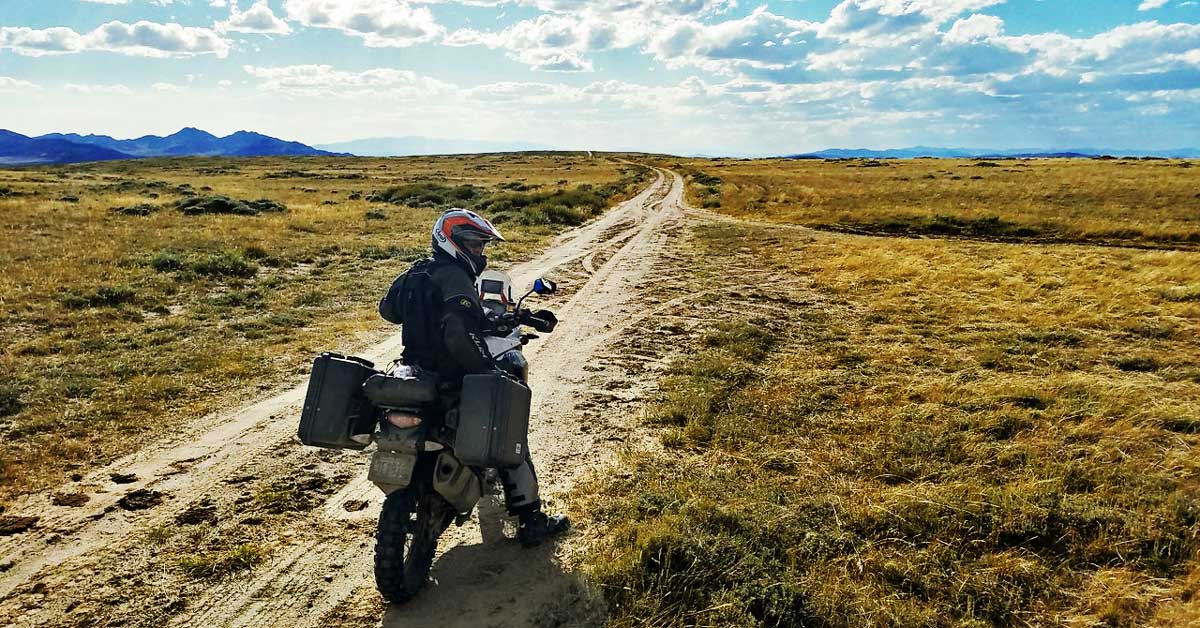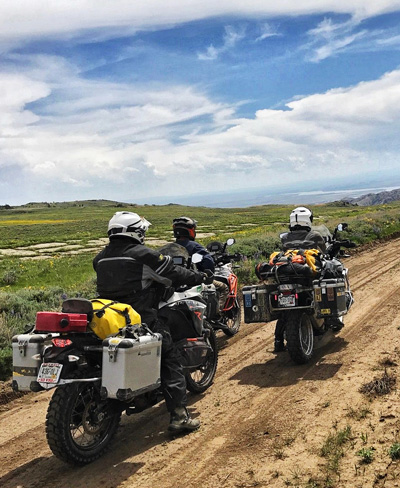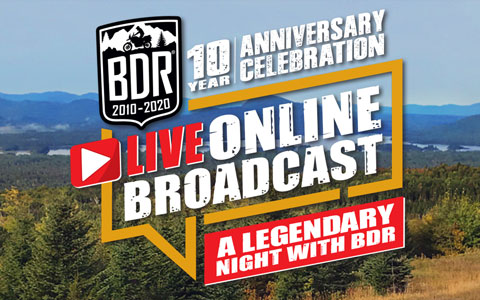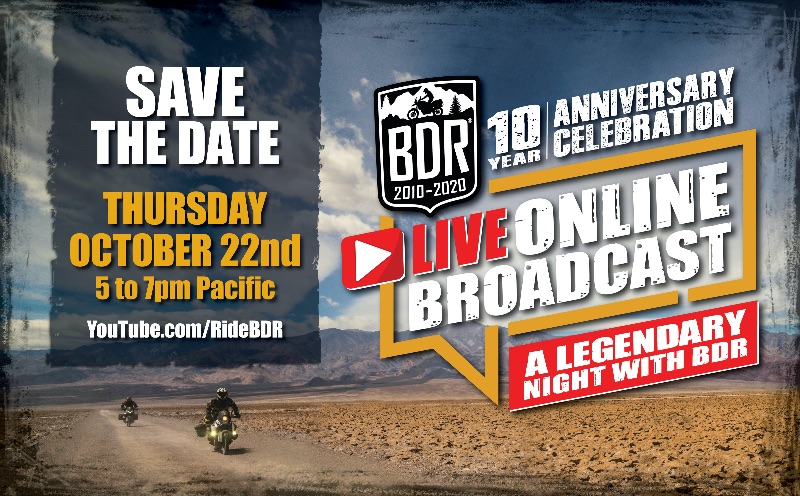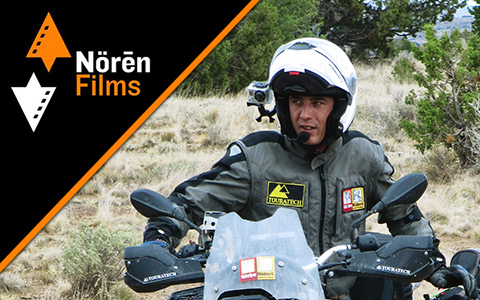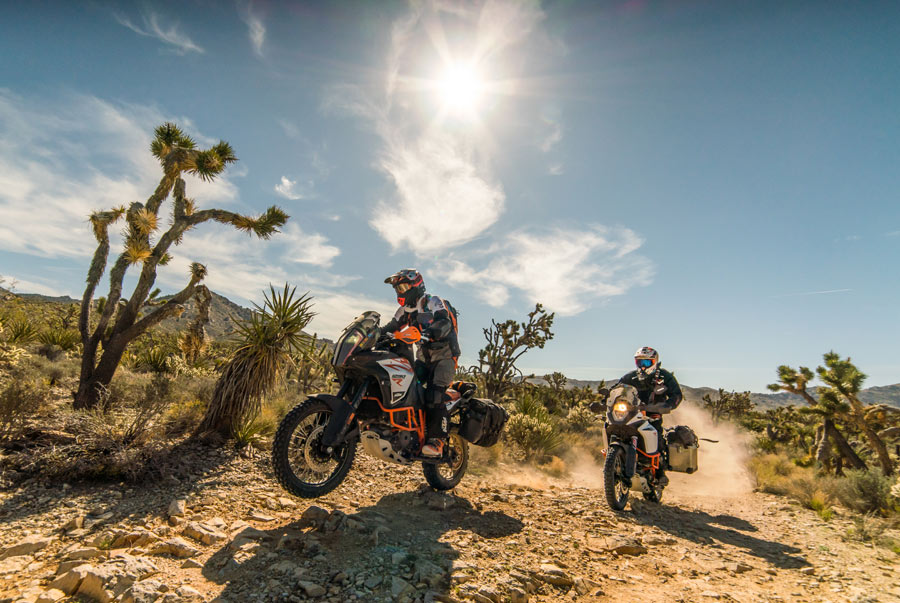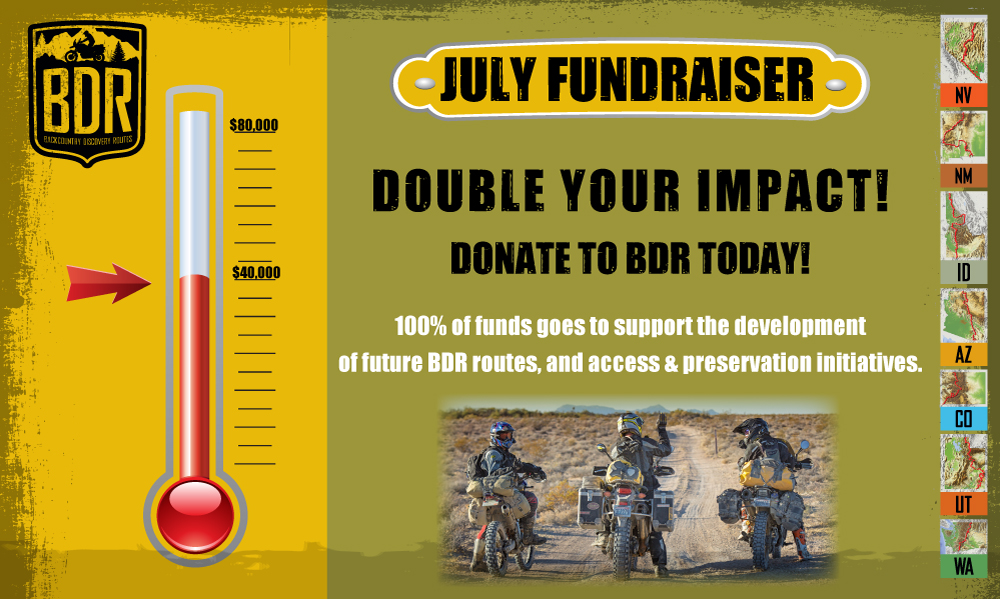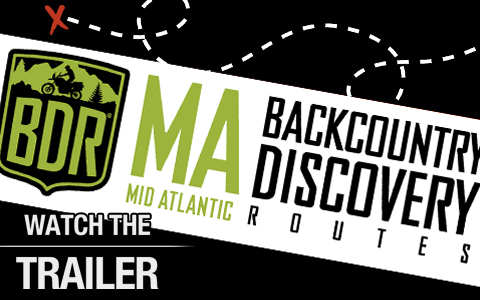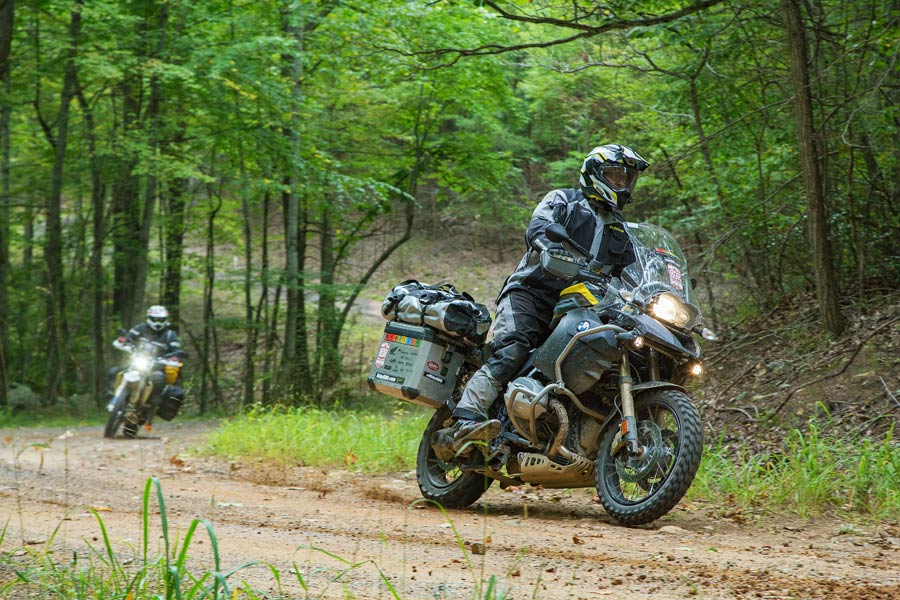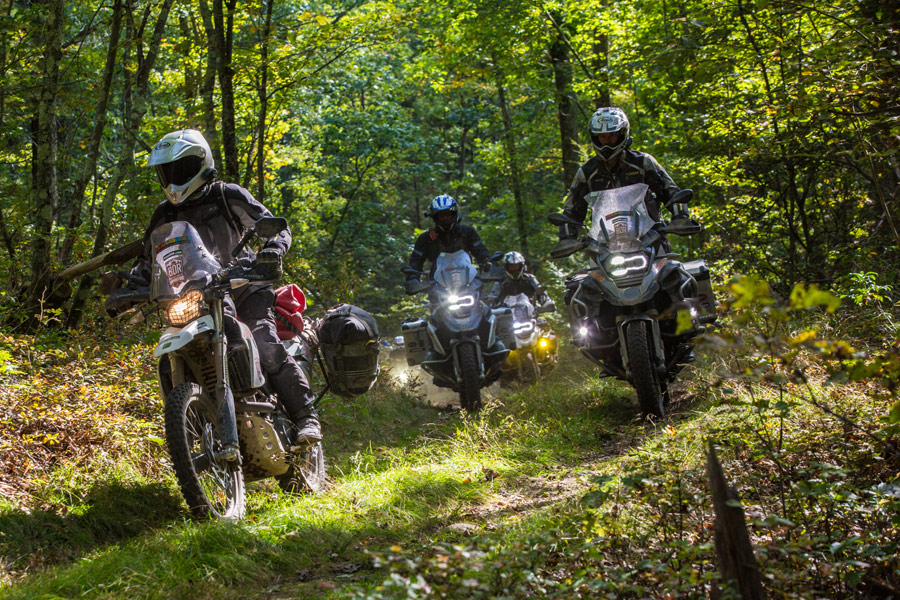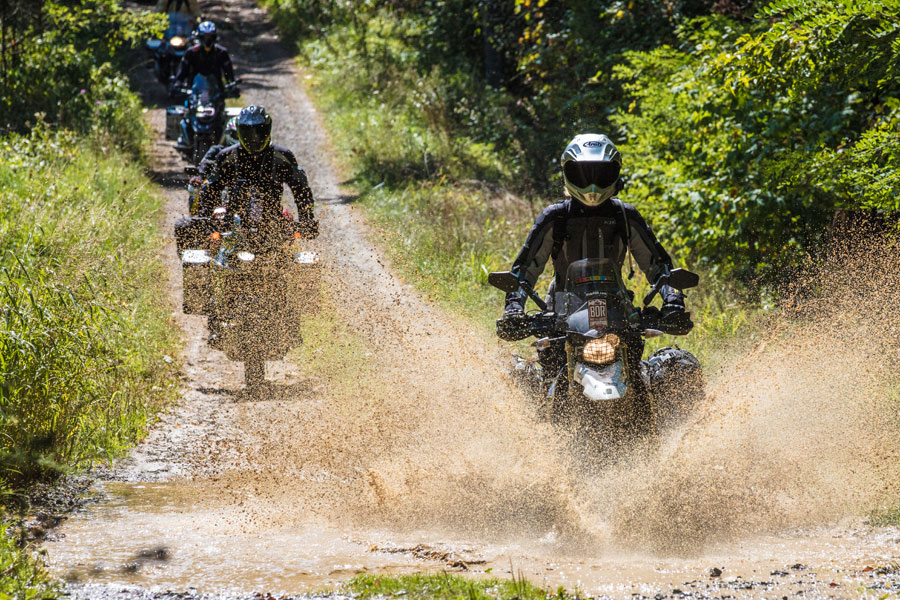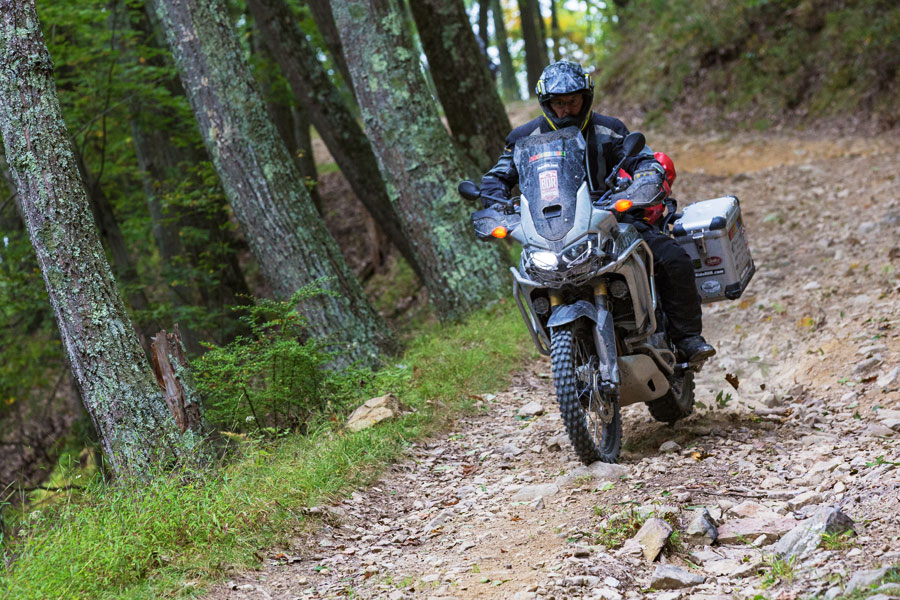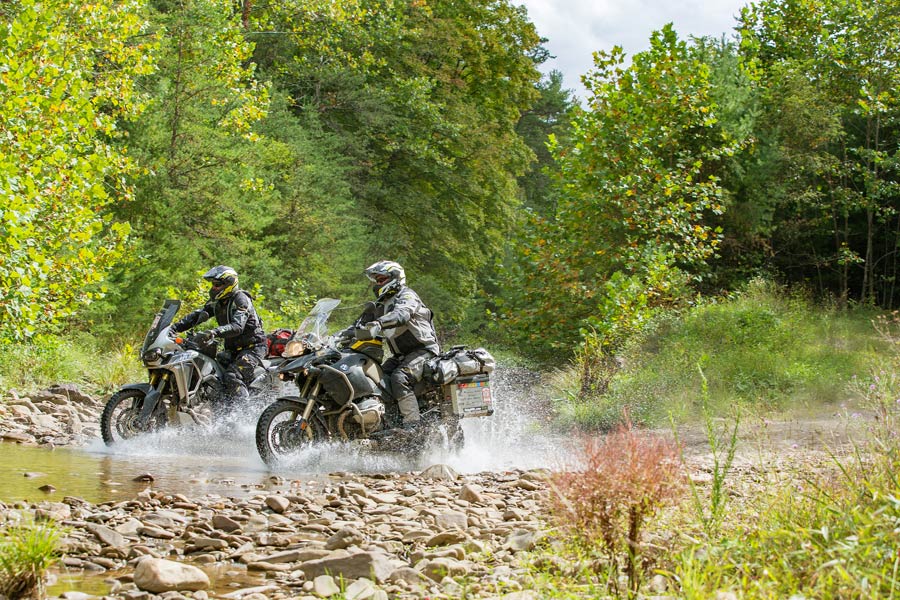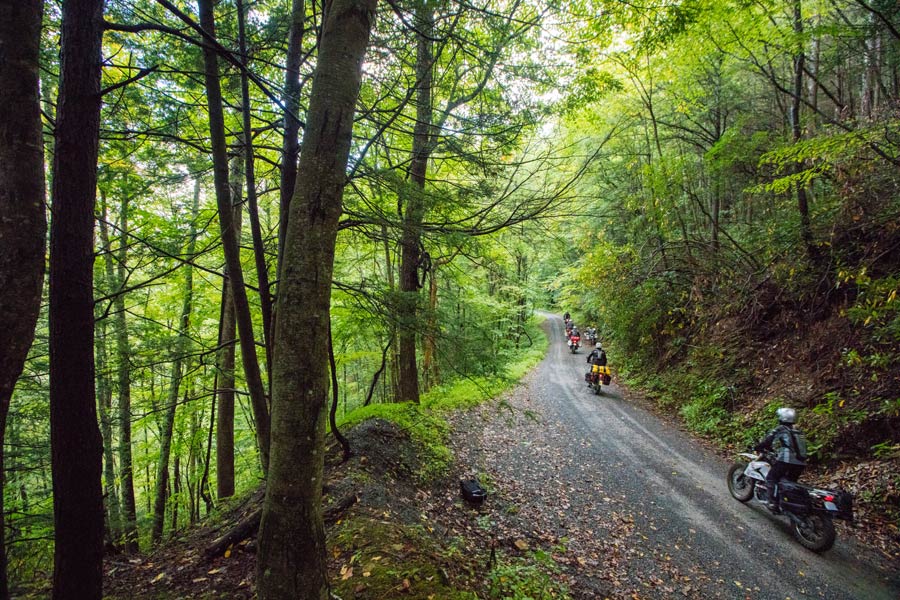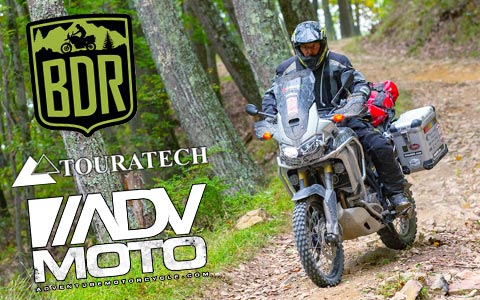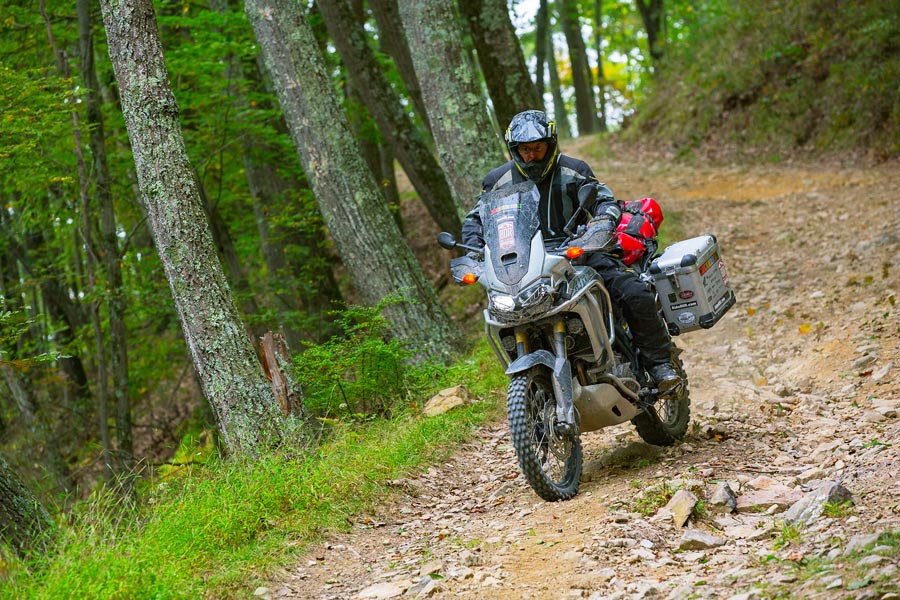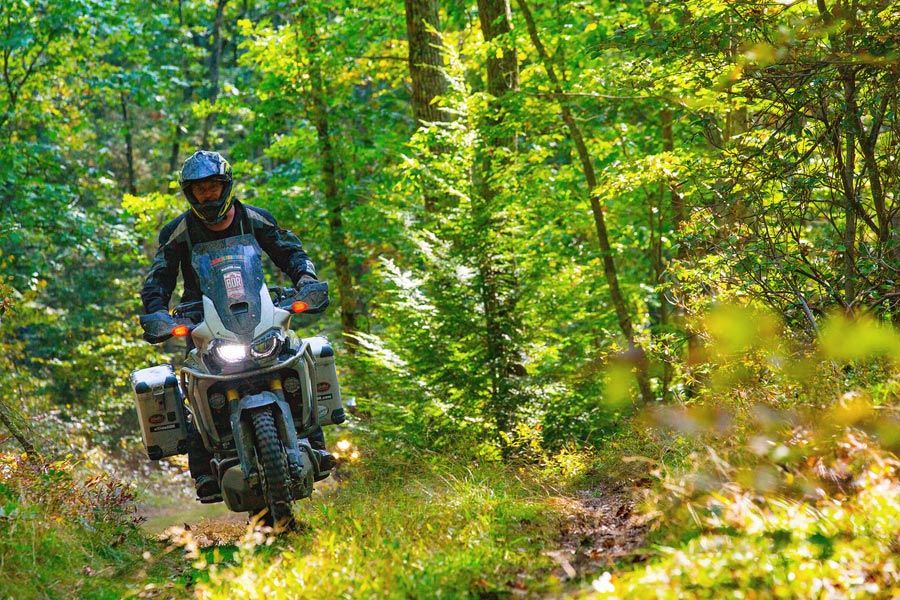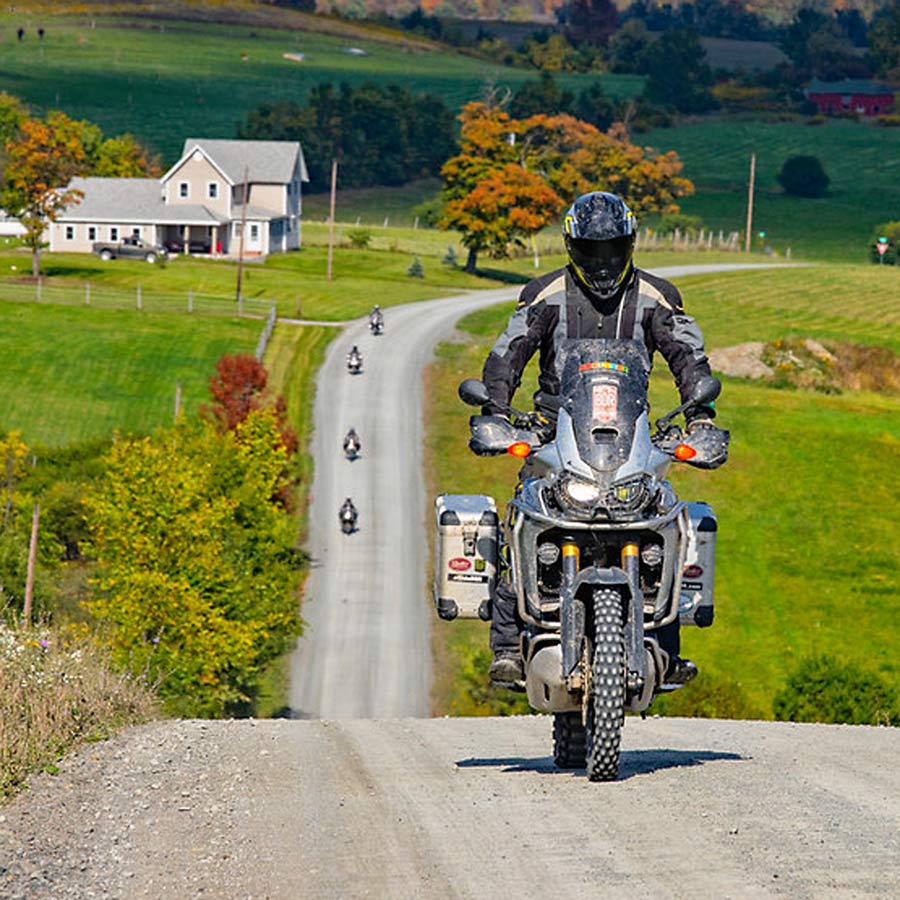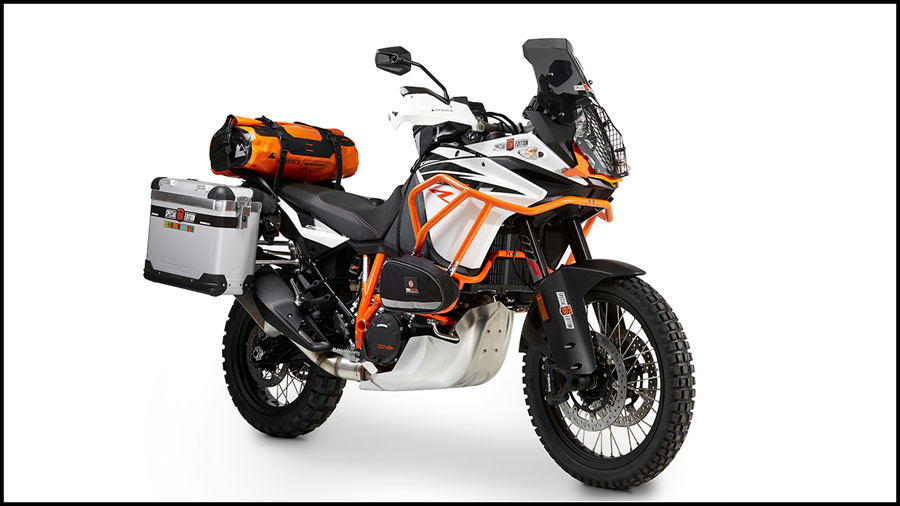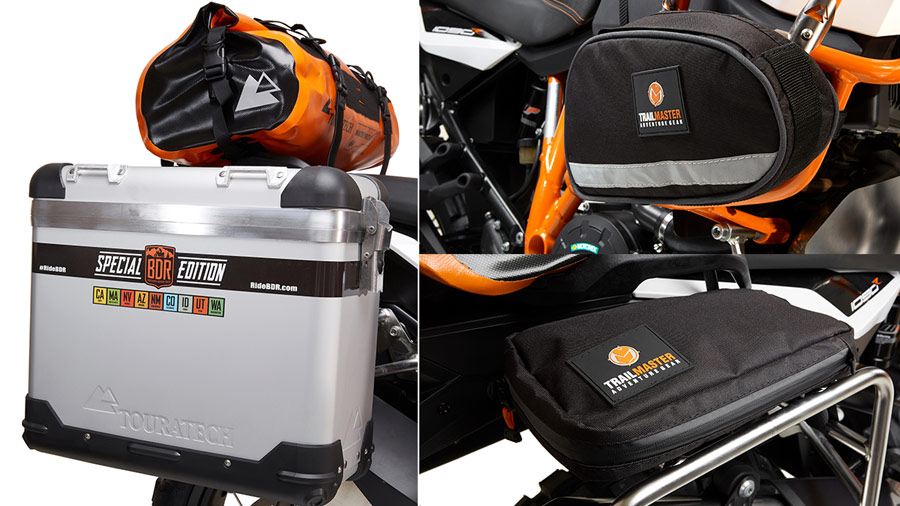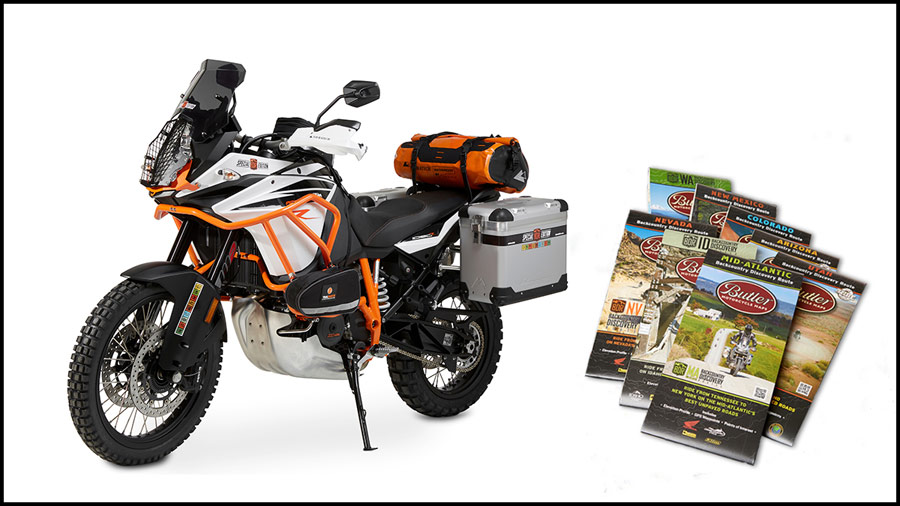Sterling Noren has a story to tell. Several actually, and you’ve heard at least one of them if you’ve watched any of Helge Pedersen’s Globe Riders films or the Backcountry Discovery Route (BDR) DVDs. Noren (pronounced “Noreen”), has been filming and producing motorcycle adventure stories for almost twenty years. Now he’s an accomplished rider, videographer and storyteller extraordinaire.Yet, like many folks, he took a couple of side roads to get to where he is today.
Growing up on a blueberry farm in western Michigan, Sterling was eight when his mother bought him a Honda 50 that changed his life. It all started with small adventures into the hills and trails behind the family home—riding trails, crossing creeks, a little bit of pavement that he wasn’t supposed to ride on, and sometimes a forbidden candy store or to visit a girl.
Back then Noren had no idea he’d be doing the same kind of things forty years later. He’s come full circle, packing his panniers and gearing up for adventures, only now he is recording them on film. “There were mechanical breakdowns, intrigue, romance and accidents… all the seeds of adventure were planted back then,” says Sterling.
High school was his first foray into filmmaking. They had an extremely advanced media program where he learned the basics. It was also where he discovered a love for storytelling—a ticket into other worlds.
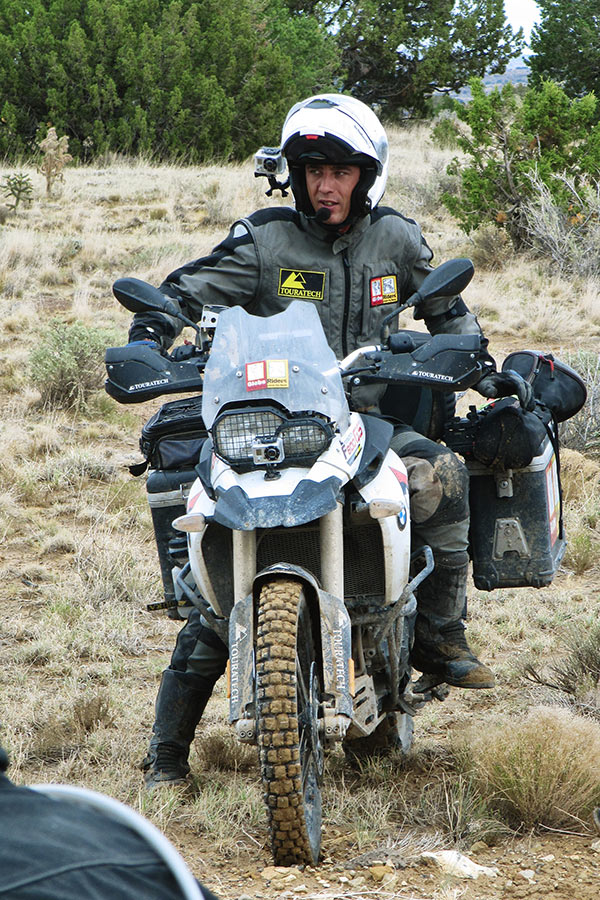 “Get out there, do it and experiment. Share what you create with others. Use that experience and their feedback to make improvements. The more you do it the better you are going to get. That’s how I started. I just went out on my own and started filming because of my love of motorcycling and for filming. I just let that passion be my guide.” —Sterling Noren
“Get out there, do it and experiment. Share what you create with others. Use that experience and their feedback to make improvements. The more you do it the better you are going to get. That’s how I started. I just went out on my own and started filming because of my love of motorcycling and for filming. I just let that passion be my guide.” —Sterling Noren
Shortly after, he saw a Greenpeace video. “There was a zodiac boat flying across the water with a cameraman on the bow and whaling ships in the background,” Sterling explained. “Something about that image, interacting with the wilderness while doing good, got to me—maybe it was protecting the planet combined with adventure and film…. That’s where I formulated the idea of becoming an adventure filmmaker, even though I didn’t actually know what that meant at the time.
From there, Sterling attended Grand Valley State University and earned a B.S. in Film and Video Communications. The first thing he did after graduating was to apply for jobs with Greenpeace and National Geographic. Both sent rejection letters. Undeterred, he continued to look for work filming subjects he believed in, but couldn’t find projects he wanted to do. So, while working jobs that paid the bills, he headed off for adventures on his free time. “I would go backpacking, hiking and climbing, then return to my video production job as a cameraman or editor to work those boring corporate industrial videos,” Noren recalls.
Boring or not, the professional experience in video production allowed him to perfect the craft and soon he began to combine the two worlds. When he moved to Seattle to pursue his interest in rock climbing, it wasn’t long before he reunited with motorcycling, riding a used BMW /5 for four years before graduating to a new 1998 BMW F650GS. The motorcycles enabled adventures of their own, often filling the void during his time off work.
1996–1998 were pivotal years. In 1996 he bought his first video camera about the same time he was laid off from Microsoft. Suddenly, he had lots of extra time on his hands. It was then that Noren met the veteran motorcycle adventurist, Helge Pedersen, and the two became friends. This confluence of events significantly changed the landscape of Noren’s life and helped him get started on the path he’s on today.
In 2001 Noren documented his first expedition with Helge and GlobeRiders (GlobeRiders.com). Their documentaries were meant both as promotion and as a way of inspiring others to get out and explore the world on two wheels. It’s been a productive friendship for them—and as a result, he’s shot film footage in over forty countries in thirteen years with GlobeRiders.
Pedersen introduced Noren to Tom Myers, president of Touratech USA/ CycoActive (Touratech-USA.com), long before he was importing and distributing for Touratech. When the nonprofit Backcountry Discovery Routes (RideBDR.comdeBDR.com) organization was formed, Noren and Touratech teamed up to bring those rides to life. Originally intended as a way to get people adventure motorcycling and exploring our American backyards, the Backcountry Discovery Routes have become far bigger than anyone could have imagined.
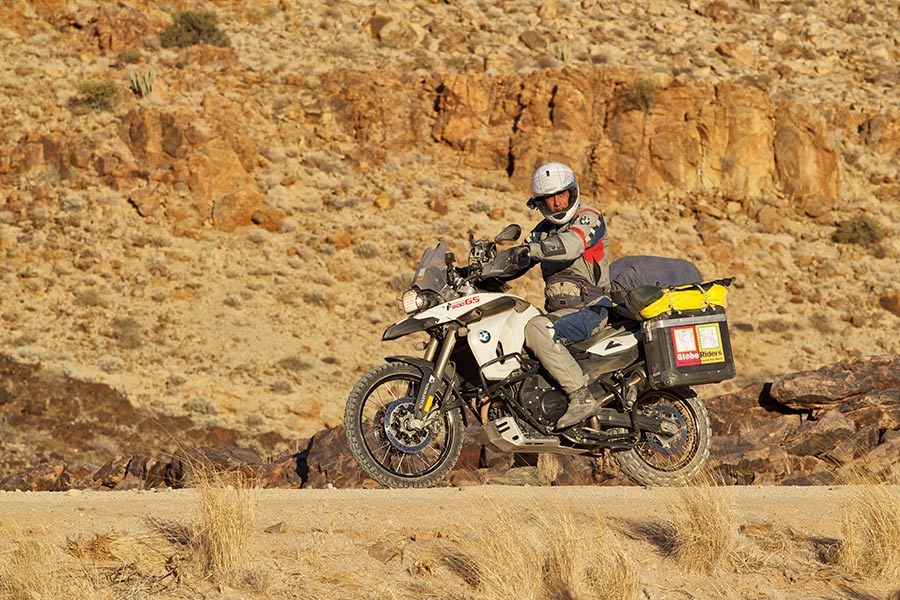
Noren shot much of the latest Idaho Backcountry Discovery Route with a Sony NX30. It’s small, has incredible image stabilization, professional sound capabilities, a built-in projector and holds nine hours of footage in the camera’s internal memory. Other tools include a professional shotgun microphone, wireless lavalier microphones and a carbon-fiber tripod. Your body is a terrific shock absorber, so Noren mounts a GoPro camera on his helmet. He also has a pistol grip he can attach to the GoPro, which he can then stuff inside his chest harness, using it like a holster.
“The BDRs are a resource for people who want to get out there and explore the world on their adventure bikes but don’t have the time or money to do the super big international expeditions,” says Noren. “That’s what the GlobeRiders trips are about. They’re for the riders who want to take it to that level, but not everybody can do that.”
“One of the most important lessons I’ve learned is that an adventure isn’t complete until it’s shared. In the beginning I wanted to have these experiences on my own, for mostly selfish reasons. But I found through all of these miles that it’s the sharing, in the end, that gives it meaning,” says Sterling. “The BDR is a perfect example because we’re intentionally creating extraordinary rides that we share with others. Then, they’ll go out there and return to share their own adventures and experiences. And I think that’s really cool.” So do we. NorenFilms.com
Tips on Making Better Adventure Movies:
• Sound—Good sound is critical. Be sure to include the natural sound of motorcycles. Invest in a good microphone so that you can capture conversations without the distraction of wind noise.
• Optimize your setup—Make your film gear as accessible as possible. Pack it on top and make it easy to get to.
• Multiple shots—Get into the habit of taking multiple shots from each location. For example, take a wide shot, refocus, then take an “around the corner” shot, then pan to follow the bike around a corner and capture the rider riding away. This minimizes your effort and maximizes your context.
• Variety—Take a wide variety of shots. Never just let your helmet camera run the whole time. Put non-motorcycling content into your movies to make them more interesting.
• Set up—Get off your bike and set up shots. Film from different perspectives.
• Head and tail room—Give yourself enough room by starting filming four seconds before and holding for four seconds after the final action. Those coming from a photography background, take note.
• Get people talking—Get people to talk about the journey. Record sounds or interviews, which are always more interesting if done in the field. Conduct on-film interviews before, during and after the ride because things change on a trip and you can never go back in time to recapture a moment or feeling. On-the-spot interviews are spontaneous and fresh and can be a nice contrast to your typical sit-down, more controlled interviews.
This story first appeared in the March/April 2015 edition of Adventure Motorcycle Magazine.
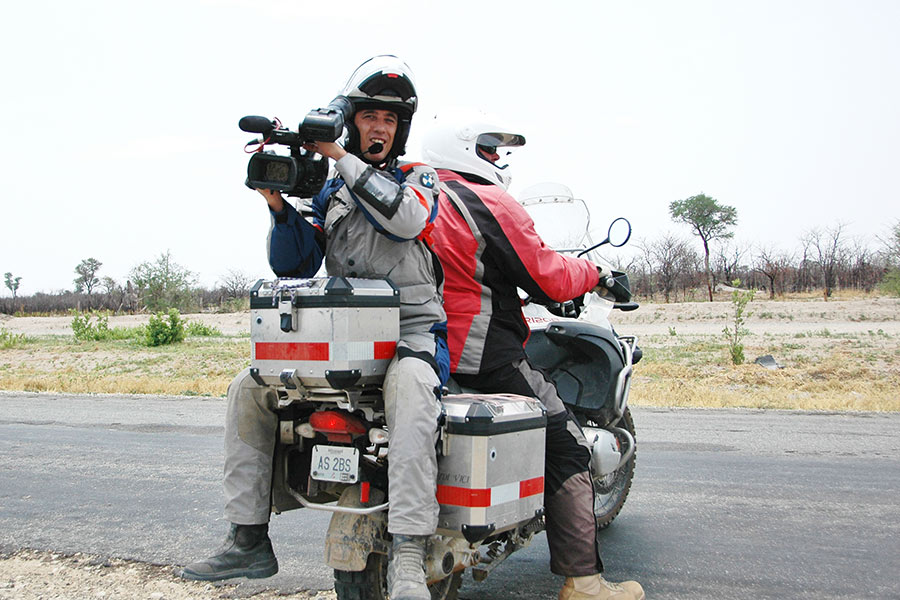 Click to enlarge image Sterling-Noren-films-profile-1.jpg
Click to enlarge image Sterling-Noren-films-profile-1.jpg

